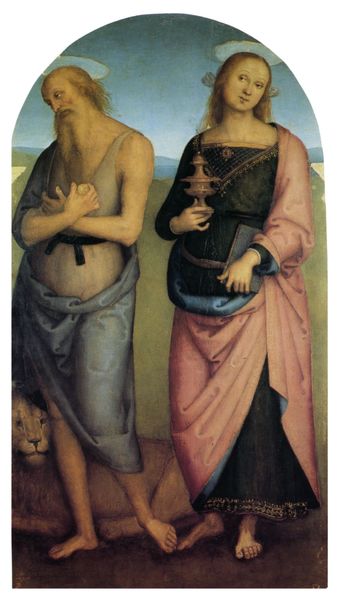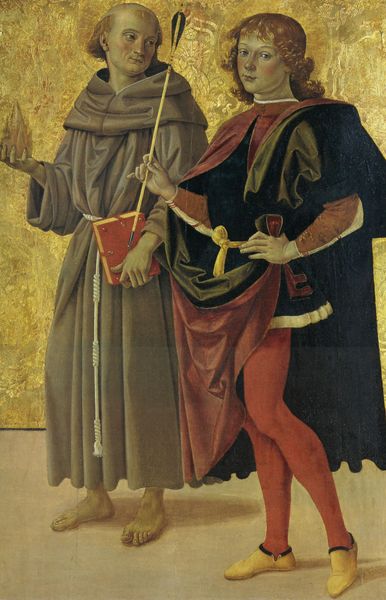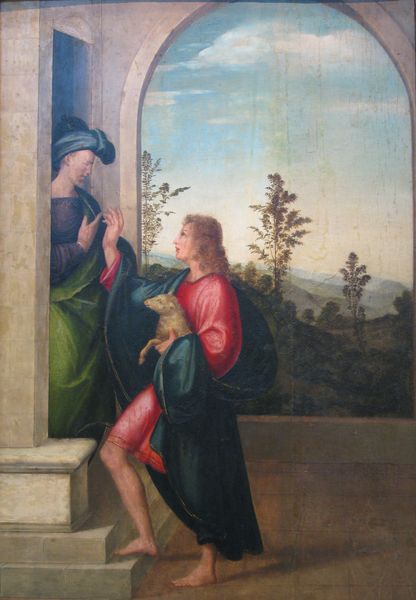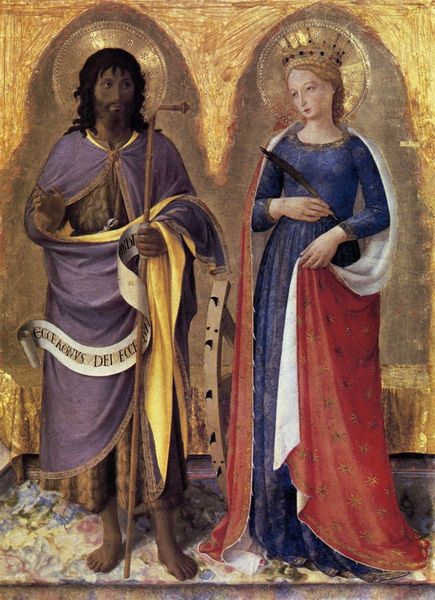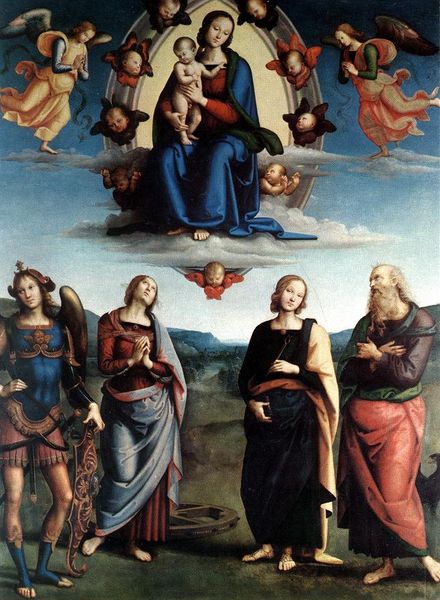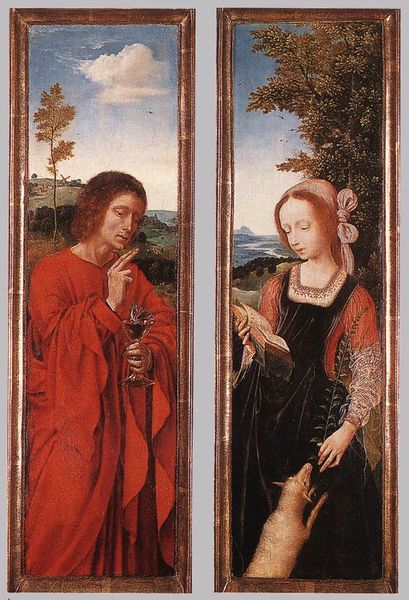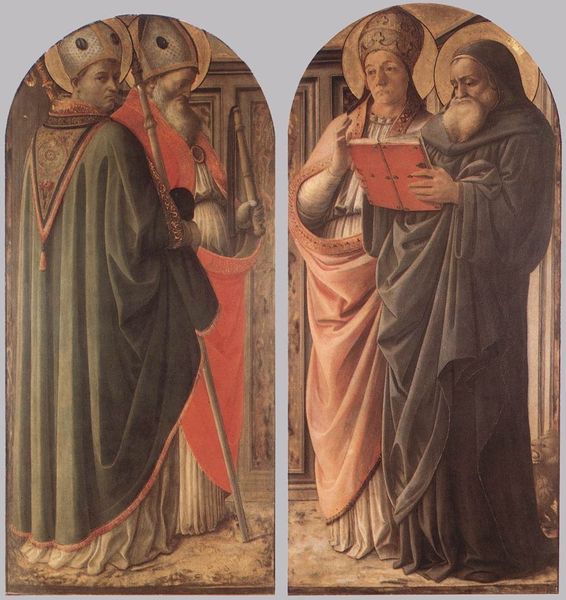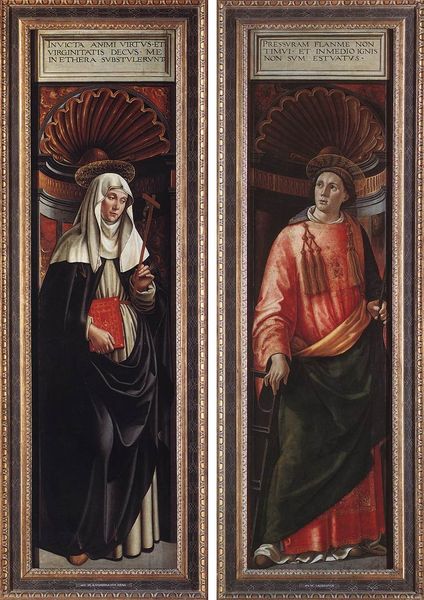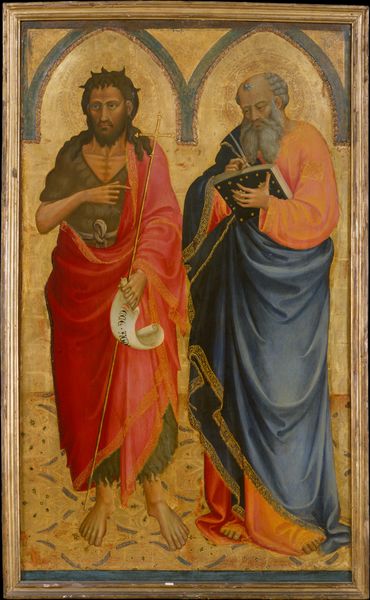
Altarpiece of St. Augustine - Scene John the Tufer and the St. Augustine 1510
0:00
0:00
pietroperugino
National Gallery of Umbria (Palazzo dei Priori), Perugia, Italy
tempera, oil-paint
#
portrait
#
tempera
#
oil-paint
#
oil painting
#
christianity
#
history-painting
#
italian-renaissance
#
portrait art
#
christ
Dimensions: 173 x 91 cm
Copyright: Public domain
Curator: This is a section of Pietro Perugino’s "Altarpiece of St. Augustine," specifically the scene featuring John the Baptist and St. Augustine, completed around 1510. Editor: My immediate impression is one of stillness and serene formality. The palette is soft, dominated by rose and umber hues, and the figures seem to float against a very subtle landscape. Curator: Indeed. Perugino, a prominent figure in the Italian Renaissance, crafted this altarpiece for the Church of Sant'Agostino in Perugia. The work originally was one section of what was actually several panels portraying various saints and biblical scenes. This work really captures a moment in the growth of humanism and religious expression. Editor: Formally, note how Perugino utilizes contrapposto in both figures, imbuing them with a sense of classical grace. It gives motion through shape rather than expression. Augustine’s pose holding his staff is beautifully balanced, almost like he’s caught in mid-stride. Curator: Yes, that elegant balance was key to the period and really marks the aesthetic ideals. But beyond the technical artistry, think of the commission and placement of this altarpiece. It visually reinforced the spiritual authority of the Augustinian order during a period of reformation and religious questioning. Editor: And even on the individual scale there is balance: a material-driven observation is how the light seems to particularly love Augustine’s red and black robes. The contrast and sheen create visual interest but guide our eye back to the subtle and open landscape. The background’s use is incredibly effective. Curator: That open background, however subtle, connects the divine with the everyday, echoing the Renaissance humanist philosophies of bridging the gap between the celestial and terrestrial. The use of oil paint contributes to Perugino’s precise and meticulous representation of natural light and form. Editor: The softness almost suggests ideal form and, in doing so, elevates the divine image over physical existence, almost hinting toward the spiritual realm both are participating in. Perugino's approach to space and his subtle gradation really capture something more than simple artistic representation. Curator: A great artwork that blends artistic and political influence, even today its clear why this artwork still has the emotional impact. Editor: I concur, a masterwork on balance and its many facets, something clearly portrayed across not just form but its intended message.
Comments
No comments
Be the first to comment and join the conversation on the ultimate creative platform.
